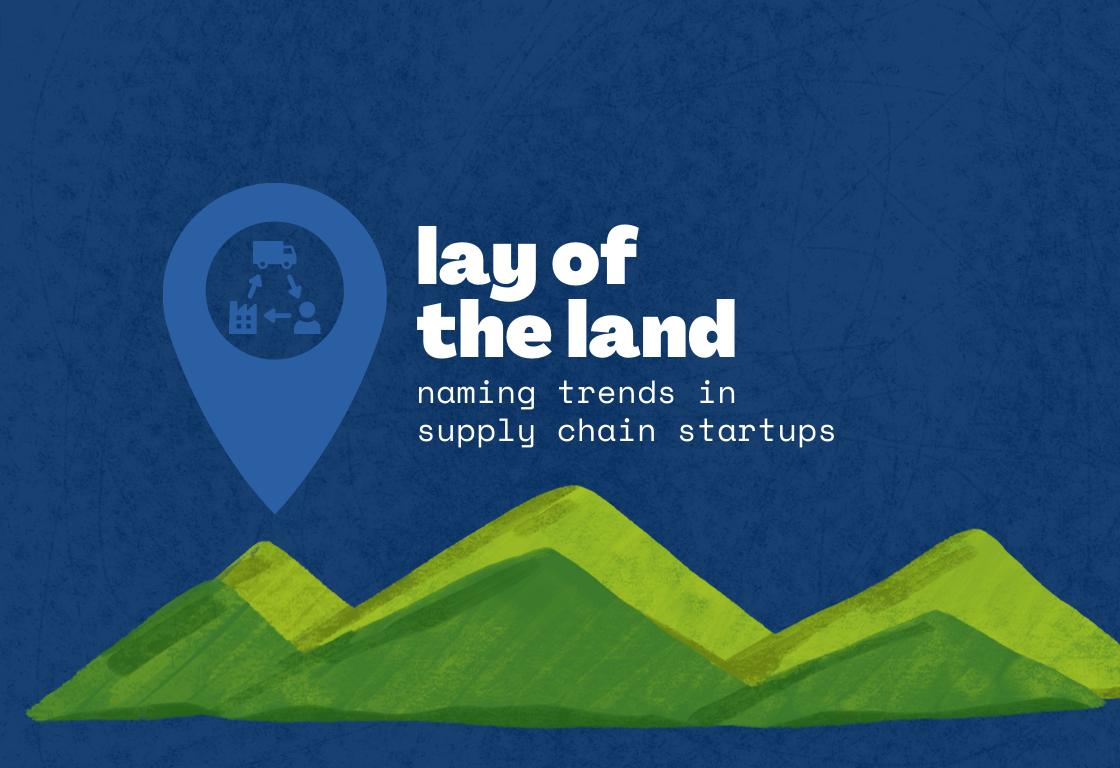Even before Covid, the global supply chain was ripe for innovation. Some sectors — like commodities for instance — have been running on Excel and paper for decades. Since Covid, the urgency to rethink and reimagine all sides of the supply chain has hit an all-time high.
So naturally we’ve seen a huge influx of new technologies, companies, and thus brand names, within the supply chain sector. From end-to-end visibility software and IoT, to next-gen warehouse technology and delivery optimization, players are popping up — and sometimes exploding with growth — everywhere.
We wanted to wrap our heads around naming in the space. Our friends at Alpaca.vc have an excellent field study that helped us better understand who’s doing what. From there, we dove deeper to get a lay of the naming landscape. Here are the six main naming trends we uncovered.
Get creative
In looking at a variety of supply chain startups, we were surprised by how creative some of the names actually are. FourKites, The Eighth Notch, Project44 are not traditional in any way. In fact, they sound more like band names than startups. This shows that brands now have permission to be more innovative in naming — there’s no need to stick to traditions, conservative approaches or conventional thinking. And that’s good because many of these startups are introducing highly innovative technologies to solve long-standing problems across all sides of the supply chain. Their names should mirror this!
Go direct
As with any naming landscape, you naturally see more descriptive names that signal the category, or speak to what the product or company does. Shippeo, Shipium, Shipsi and Shippo unabashedly share a common root. Names like Omnitracs, Deliverr and ChannelApe also tie directly to the focus of each business.
Aim for abstract
On the other hand, we spotted a fair number of players with more abstract, slightly cryptic real word names. This is par for the course in the broader SaaS category (think Slack, Asana, Adobe). And it certainly stands out as an interesting approach compared to other styles within the broader supply chain brand landscape. Names like Bound, Alloy and Fabric all share this approach.
Walk the line
Within that spectrum of more direct and more abstract names, there are a number of names that run right down the middle, signaling a bit of the category but leaving enough room for interpretation. Convoy, Loadsmart, Bringg strike that balance.
Coin It
Whether it’s a more abstract name like Trimble or more direct like STORD, or somewhere in between, there are a number of coined or invented names in the mix. Adding letters — perhaps to get the exact .COM or for SEO — is common. Flexe, Deliverr and Sennder are examples. Several names have a mid-2000s vibe thanks to their “disemvoweling,” including again STORD.
X marks the spot
Lastly, we see Xs, everywhere. Perhaps this is because these names naturally sound more technical, or there is an obvious connection with the letter X signaling intersections, and thus a clear tie to supply chains? Regardless, when you see so many X names together, it can feel overwhelming and overdone: UbiMax, DroppX, CargoX, Xpressbees, RELEX just to name a few.
In the end, the biggest, most exciting takeaway for anyone naming in the supply chain technology space is that the sky truly is the limit. Don’t feel shackled by the industry's more traditional side and history. As a brand owner, you have permission to signal innovation in fun, creative and powerful ways, just as you’re doing with your technology.
Scott Milano is the founder & managing director at Tanj.
